Have you tried baking sourdough bread time and time again… only to end up with small, dense, hard loaves that won’t rise? Maybe your starter just wasn’t ready. Here are some sourdough troubleshooting tips, and how to know when your starter is strong enough for bread-baking!
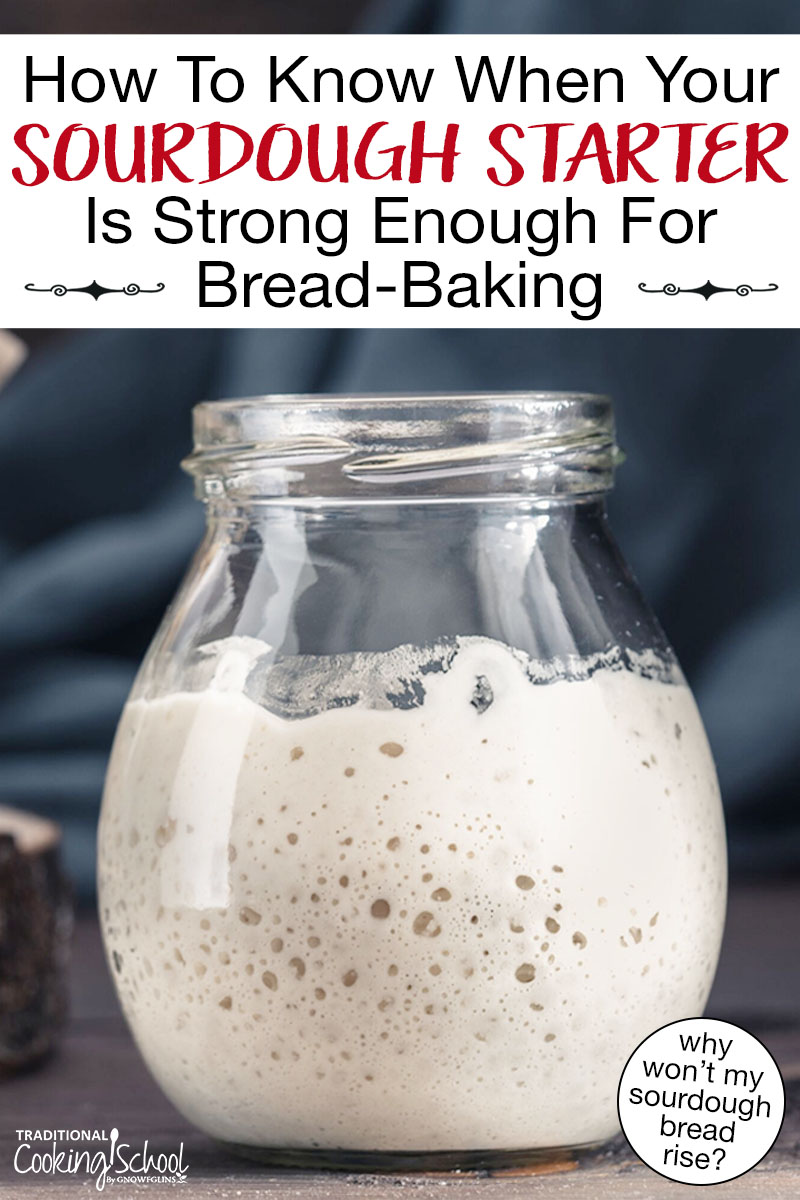
When is a sourdough starter ready for baking? If it’s bubbly, is it time?
Here’s everything you need to know about baking with a young sourdough starter — how soon is too soon, the signs of readiness, and great discard recipes for a starter that isn’t mature enough for baking bread yet!
Table Of Contents
Why Sourdough?
Traditional sourdough has been used by people for centuries as a way to leaven their bread. But, I have to confess, sourdough was not the easiest beast I’ve taken on in my kitchen.
I’ve always loved the taste of sourdough bread. My mother didn’t bake with sourdough as I was growing up, so although I loved it, I didn’t have it often.
Then, when my husband and I were first married, I tried my hand at making a starter. I mistakenly used a method that called for store-bought yeast and feedings only every 3 days.
An overgrowth of mold and fruit flies forced me to toss it and give up. 🙁
After learning how sourdough breaks down the phytic acid in the grain, makes bread and flour easier to digest so we get more of their nutrients, and is a way of creating your own yeast without having to buy it at the store, I became determined to create my own starter again.
Thankfully, I gained a bit of wisdom and persistence with age and learned how to make a sourdough starter the RIGHT way, and have been baking up delicious sourdough bread ever since.
If you’re in my shoes, you may be wondering a couple of things:
- You just started a sourdough starter… when is it ready for bread-baking?
- Is there such a thing as too soon?
I’m sharing the answer on today’s #AskWardee! Keep reading or watching below to learn more!
Subscribe to #AskWardee on iTunes, Stitcher, YouTube, or the Podcasts app.
The Question: When Is My Sourdough Starter Ready For Baking?
Sarah S. asked:
Hi, Wardee- After listening to your podcasts and watching your YouTube videos on sourdough, I’ve decided to try my hand at it again.
Here’s my question: I’m on day three (started the new starter batch on Saturday- today is Monday) and while I’ve only started with 1/4 cup each of Berkey water and organic Rye flour, my starter is already bubbling like crazy and is even overflowing my glass pint jar. (And yes, I’ve been removing half of the starter before feeding it each day). I’ve wiped down the outside of the jar and shaken the jar a little to knock down the starter. Am I doing something wrong? It can’t be that my starter is strong enough to bake with, right? It’s only three days old. I’ve just never had starter react and grow and become bubbly that fast… I’d love any insight or idea have for me. —Sarah
Sarah, thank you for your question!
Because we’re featuring your question today’s #AskWardee, you’re getting a gift — a FREE eBook and Video Package! Our team will be in contact with you so you can choose which one you’d like!
When Is Your Sourdough Starter Ready For Baking?
A sourdough starter might be quite lively in the early days, especially when using rye flour. It might also dip in activity after a few days as the organism’s balance shifts, and then get active again.
This is quite common and not a reason to throw it out! (Many people do, so sad.)
Just keep stirring and feeding (you can even skip a feeding).
As for when it’s ready for baking…
If it’s active and bubbly on day 5, even if it went through a lull, then use it in sourdough recipes that are not dependent on strong leavening.
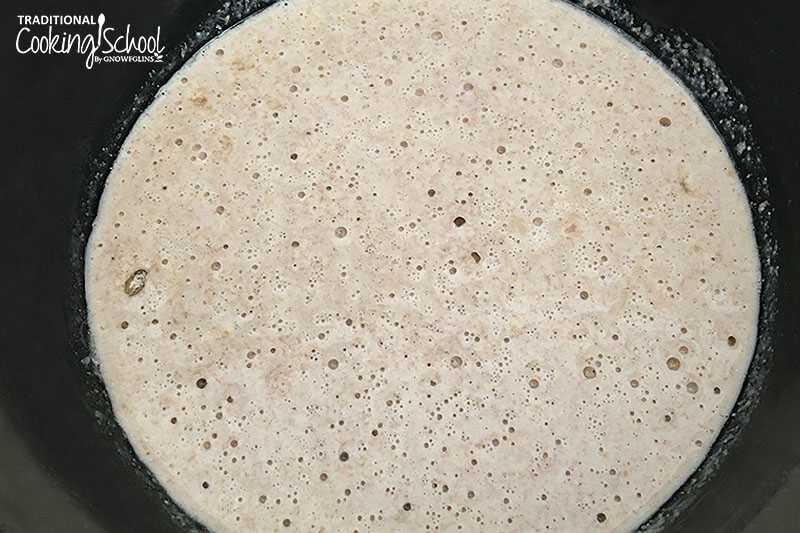
The RIGHT Way To Feed A Sourdough Starter
After my first (failed) attempt at sourdough, I adjusted my method.
This time, I fed my starter twice a day, kept it warm, but not too warm, and was rewarded with bubbles and an active starter by the third feeding! (And yes, it definitely reminds me of Goldilocks and the Three Bears with the perfect temp.)
I was faithful with my feedings, and after a few weeks (and several batches of delicious sourdough pancakes), I was ready to try my hand at bread! After all, sourdough bread was the real reason I’d decided to give this thing another go.
I mixed all the ingredients, noted the time, and eagerly checked on my dough for signs of rising after a few hours. Hmmm, not really much going on.
After a full 12 hours, I decided to bake it anyway. Maybe it would rise while baking…
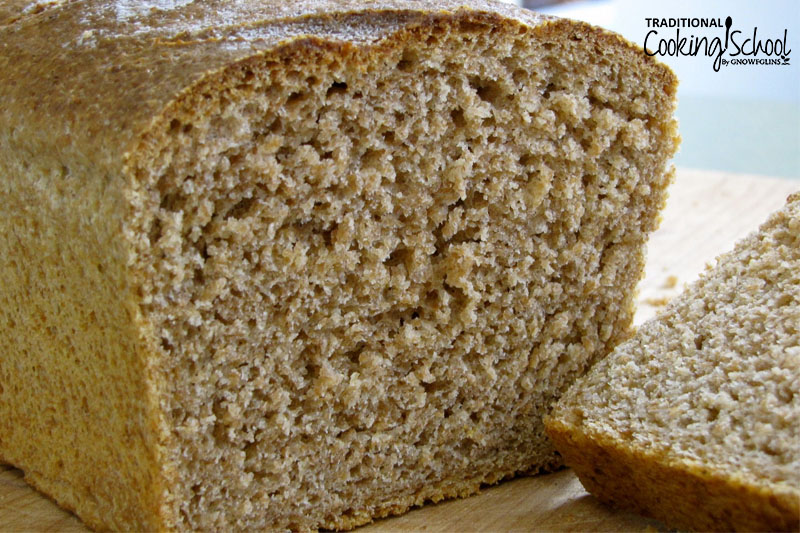
Why Won’t My Sourdough Bread Rise?
No. It was a pretty dense and hard loaf.
Once again, I felt like a sourdough failure.
Why wouldn’t my sourdough bread rise? What was I doing wrong?
I was determined to master this!
I continued faithfully feeding it and making other items with my starter — sourdough pizza, sourdough waffles, delicious sourdough coconut muffins, and the easiest no rolling sourdough tortillas. Not to mention, my Chocolate Sourdough Cake was a smashing success!
How I Got My Sourdough Bread To Rise
After 2 months, I decided to try bread again. I had been feeding my starter consistently (no more forgotten feedings), keeping it warm and happy, and this time my dough began rising after a few hours. Whew!
I learned the hard way… and now I’ll pass along my bits of wisdom to you! Here’s how to know when your starter is strong enough for bread-baking!
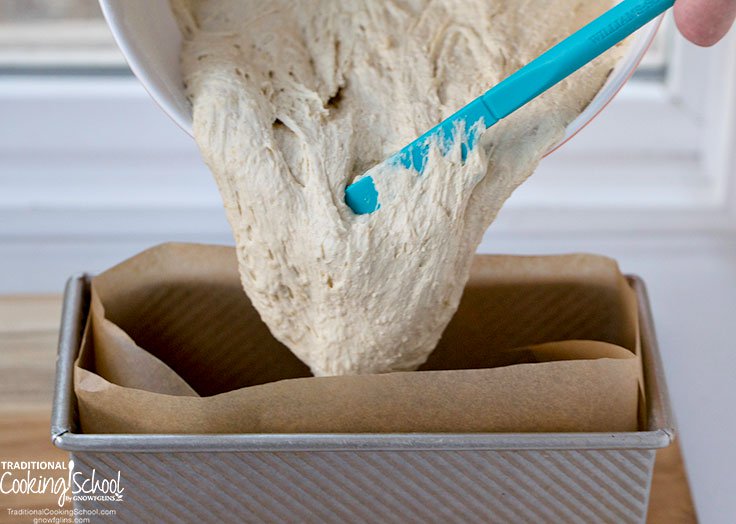
Is Your Starter Strong Enough For Bread-Baking?
There are a few questions to answer before knowing if your sourdough starter will be strong enough for baking bread.
- How old is your starter?
- How often are you feeding your starter?
- Is your starter doubling in size after each feeding?
How old is your sourdough starter?
Many people want to start baking bread with a sourdough starter that’s only a week old. A week-old starter just isn’t strong enough to rise bread.
If your sourdough starter is at least 2 weeks old, the next question to ask is how often are you feeding your starter?
How often are you feeding your starter?
A brand new starter, or a sourdough starter that will be strong enough for baking, needs regular feedings. If your sourdough starter has been neglected and hasn’t had regular, twice-a-day feedings for at least three days in a row, you’ll want to get it back on a consistent feeding schedule first.
Try to keep your feedings about 12 hours apart. Morning and evening work well.
For more information on what to feed your starter, check out Can I Feed My Sourdough Starter Different Flours? and Feeding Your Sourdough Starter…More Than Just Flour!
Furthermore, if your sourdough starter has been kept in the fridge and not at room temperature, it needs to be revitalized with at least 3 days of twice-daily feedings.
Is your starter doubling in size?
Your sourdough starter should be bubbling and rising up the sides of its container within 4 hours of feeding (always keep your starter in a container that has plenty of room for expansion!). An easy way to gauge this is to mark the outside of the jar with a rubber band, a small mark with a dry erase marker, or a piece of tape, then feed the starter.
In 3 to 4 hours, check the level of the sourdough. It should be bubbly and have risen at least a few inches above the initial mark.
It also helps to use a glass jar you can see through.
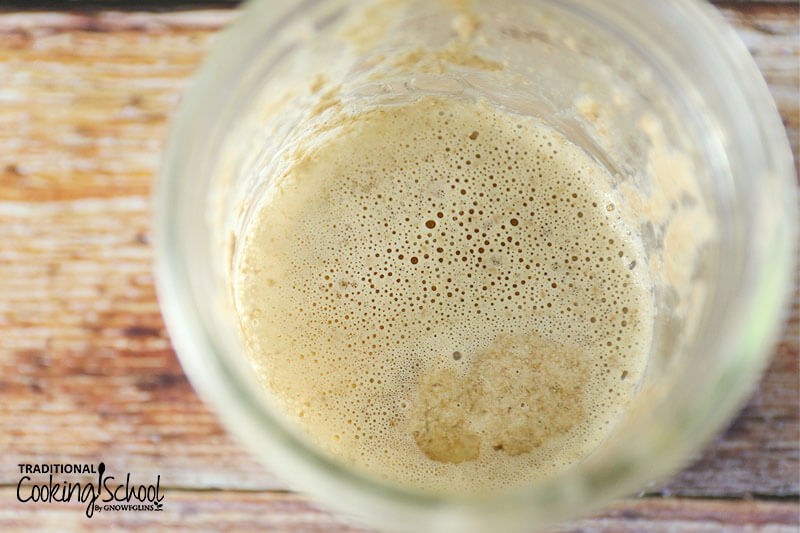
Sourdough Troubleshooting Tips
What if you’ve been feeding your sourdough starter twice a day, it’s over 2 weeks old, and it’s not rising after a few hours? Then check the following:
- Is it warm enough? Fall and winter can be hard on sourdough starters, especially in cooler climates. Try wrapping your starter in a towel or storing it in a warmer location, such as near a heating vent, on top of your refrigerator, on an upper shelf, or maybe investing in a seedling mat.
- Check for hooch. Is there a layer of clear or brown liquid on top of your starter? This is called hooch — and it’s a sign that your starter needs more frequent feedings or more flour at each feeding.
- If you are still having trouble, you may want to read my complete guide to sourdough tips, troubleshooting, and frequently asked questions.
Your Sourdough Starter Can Be Used For Baking If…
- your starter is at least 2 weeks old
- it has been receiving twice-daily feedings for at least 3 days
- it’s doubling in size within 3 to 4 hours of feeding
- there’s no hooch on top
If your sourdough starter passes all these tests then, congratulations! Your starter should be strong enough to rise bread!
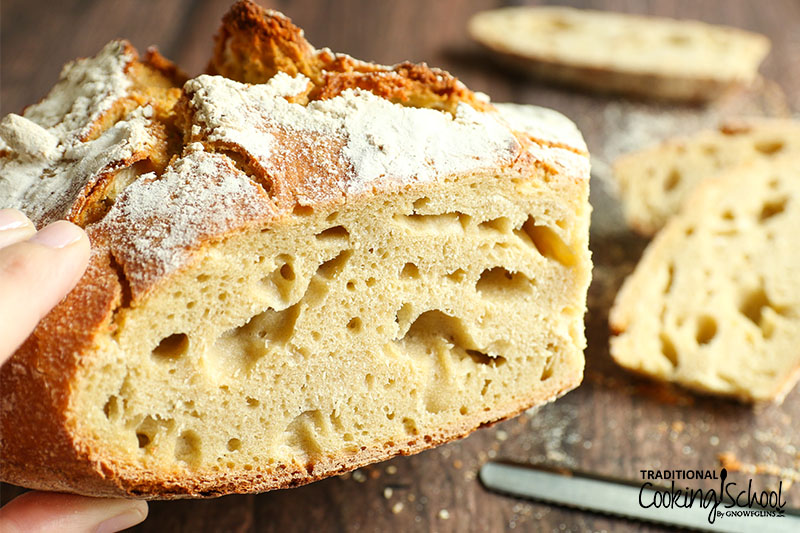
FREE No-Knead Einkorn Sourdough Bread Recipe
Einkorn is a bit tricky to figure out how to use because it behaves differently.
Yet… you can skip the learning curve by using my free and AMAZING no-knead einkorn bread recipe!
The recipe is FREE, easy, and healthy, and takes only 15 minutes of hands-on time!
Click here for the free recipe: No-Knead Sourdough Einkorn Bread.
And soon your family will be saying: “This is the best bread EVER!”
Any Questions Or Comments?
If you have other questions or comments about your own experience with using a brand-new sourdough starter, be sure to leave them in the comments!
Helpful Links
- How To Make An Einkorn Sourdough Starter
- 11 Tips For Lighter, Less Dense Sourdough Bread #AskWardee 053
- Really??? Discard Half My Starter At Each Feeding? #AskWardee 113
- How to Make a Sourdough Starter (FAQ’s, Care Tips, Recipes, & More!)
- Sourdough A to Z eBook or eCourse
- Einkorn Baking eBook or eCourse
- Debunking 4 Sourdough Myths (& How To Overcome Them)
Delicious Sourdough Recipes For You
- Sourdough English Muffins
- Sourdough Pancakes
- Sourdough Waffles
- Sourdough Pizza
- FREE No-Knead Einkorn Sourdough Artisan Bread Recipe
- Sourdough Pretzels
- Sourdough Chocolate Cake
- Gluten-Free Sourdough Bread (with FREE Video)
More Sourdough Posts From The #AskWardee Show
- Does Sourdough Bread Get Moldy? +Troubleshooting Dense Sourdough Bread #AskWardee 110
- The Best & Healthiest Flours For Sourdough #AskWardee 065
- Feeding Your Sourdough Starter… More Than Just Flour! #AskWardee 150
- Is Aged Flour *Really* Better For Sourdough? #AskWardee 122
- Can I Use Reverse Osmosis Water For Fermenting, Culturing, & Sourdough? #AskWardee 138
- How To Transition A Sourdough Starter To Einkorn #AskWardee 069
What Is The #AskWardee Show?
The #AskWardee Show is the weekly show devoted to answering your niggling questions about Traditional Cooking: whether it’s your sourdough starter, your sauerkraut, preserving foods, broth, superfoods or anything else to do with Traditional Cooking or your GNOWFGLINS lifestyle.
I share tips and resources, plus answer your questions about Traditional Cooking!
The Details
When: Wednesdays at 10am Pacific / 1pm Eastern
Where: Right here at AskWardee.TV or on social media: Traditional Cooking School on Facebook, Traditional Cooking School on YouTube, or @TradCookSchool on Instagram.
Subscribe: Find #AskWardee podcast on iTunes, Stitcher, YouTube, or the Podcasts app. While you’re there, be sure to leave a rating and review!
Want To Get YOUR Question Answered?
Here’s how to submit your question. If we answer it on #AskWardee, you’ll get a gift!
- Tweet your question to @TradCookSchool on Twitter; use hashtag #AskWardee
- Send an email to wardee at AskWardee dot tv — add #AskWardee to your email so I know it’s for the show
Please do NOT add future questions for #AskWardee to the comments of this post because they might get missed!
This post is a combination of two posts originally published and written by Wardee Harmon and Melissa K. Norris on 3/11/20 and 10/2/17 respectively. The posts were combined, updated, and republished on 1/13/21.
...without giving up the foods you love or spending all day in the kitchen!

2 free books:
Eat God's Way
Ditch the Standard American Diet, get healthier & happier, and save money on groceries...
We only recommend products and services we wholeheartedly endorse. This post may contain special links through which we earn a small commission if you make a purchase (though your price is the same).



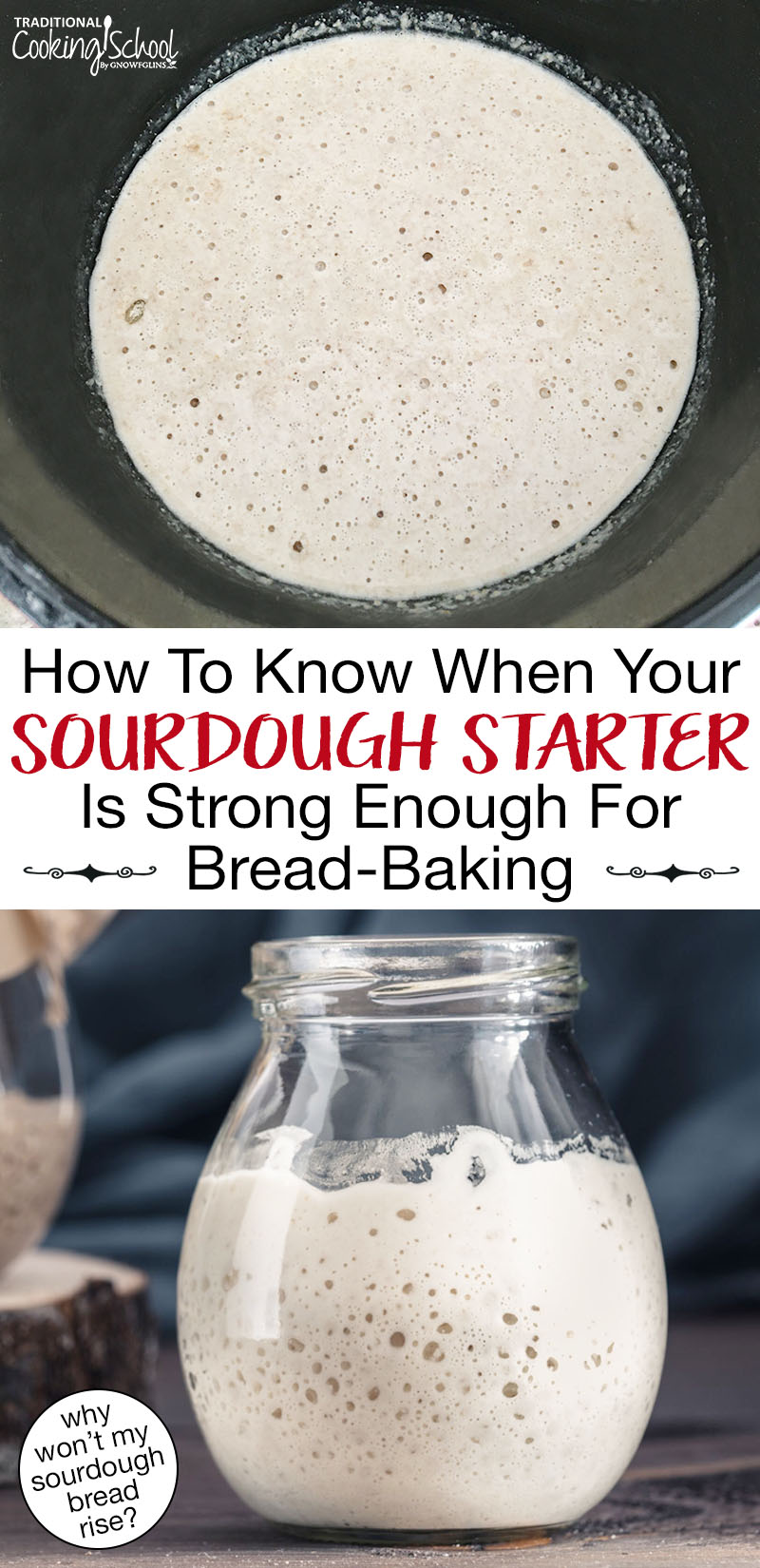
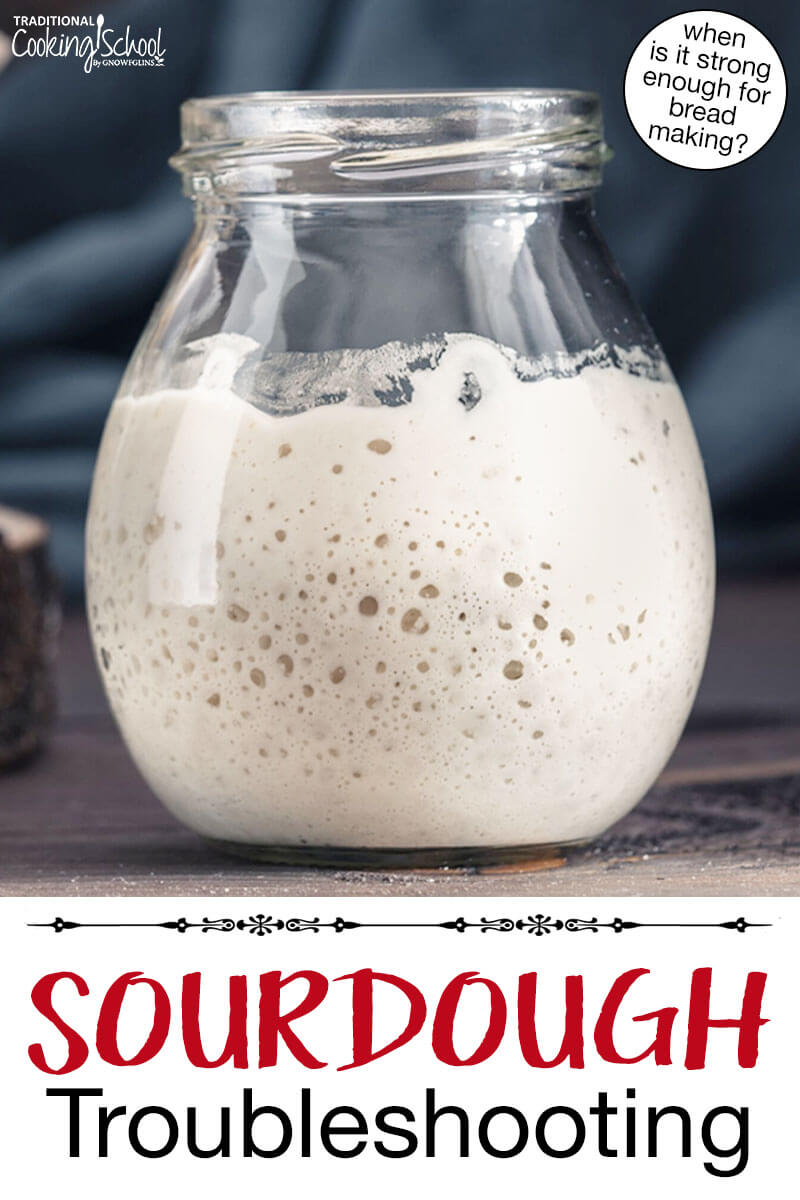
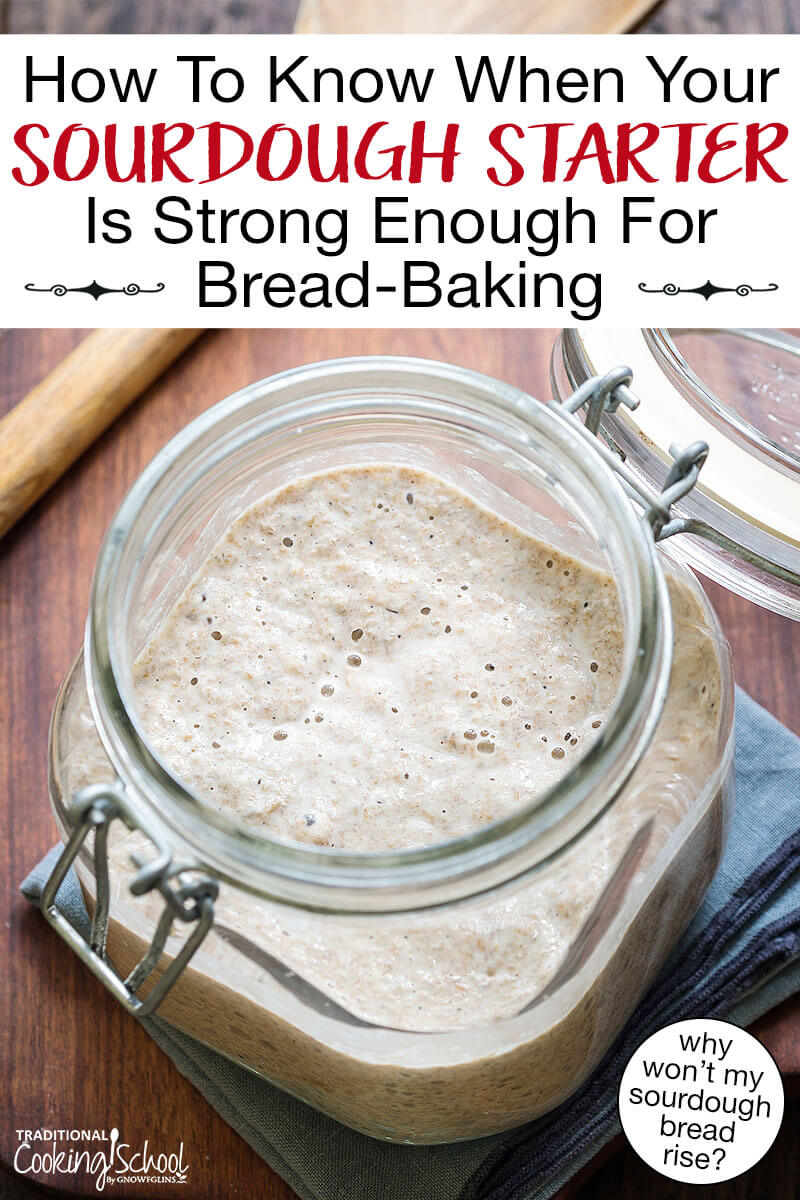
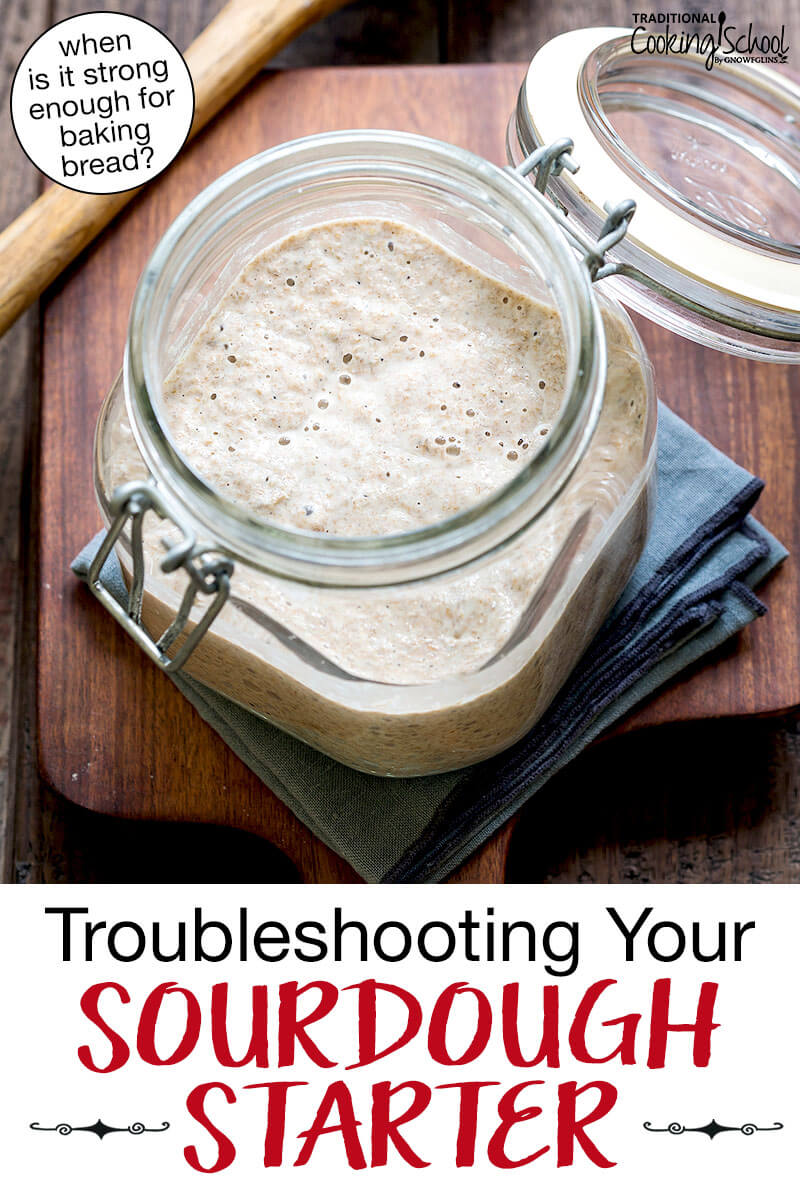
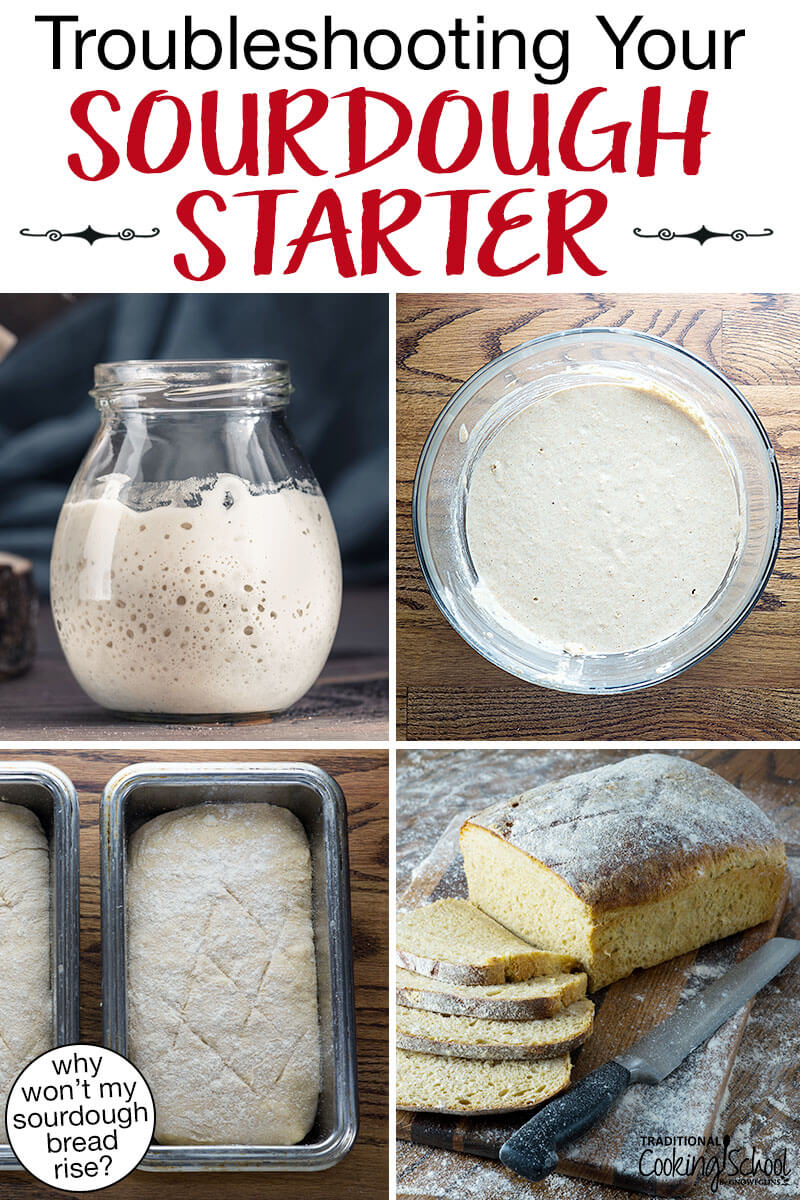
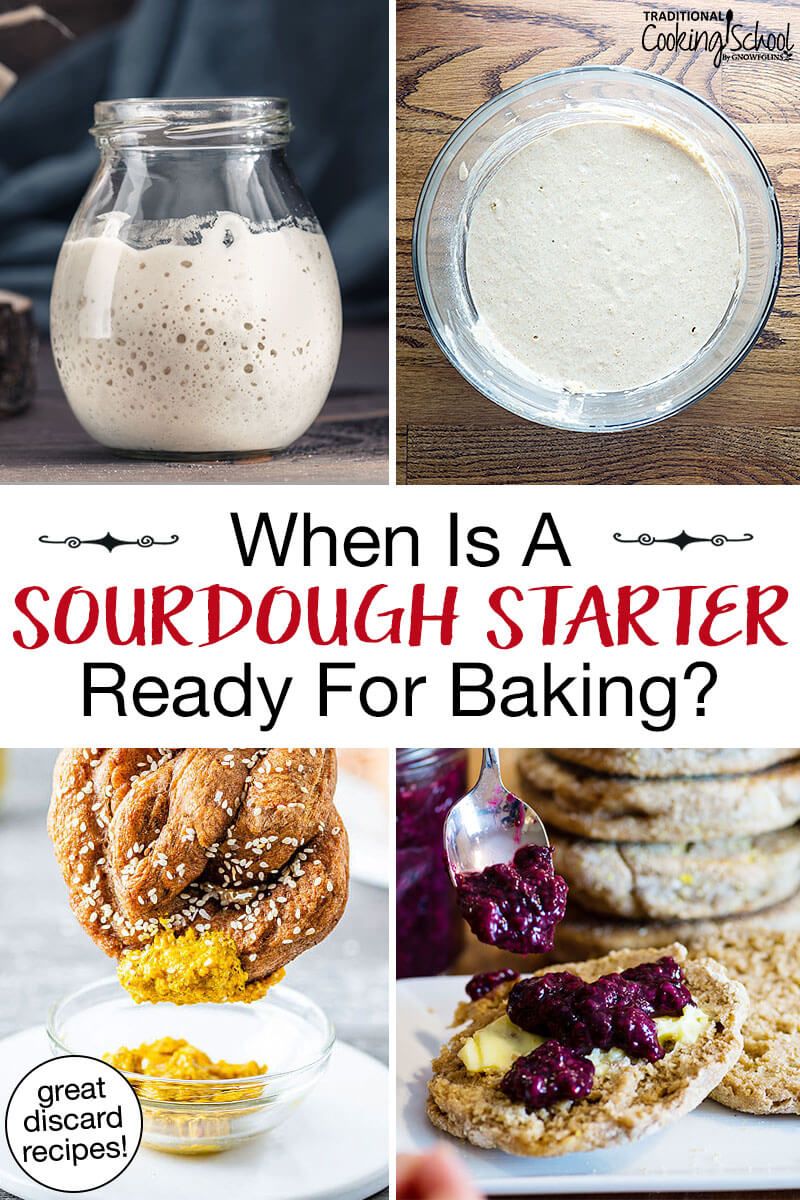
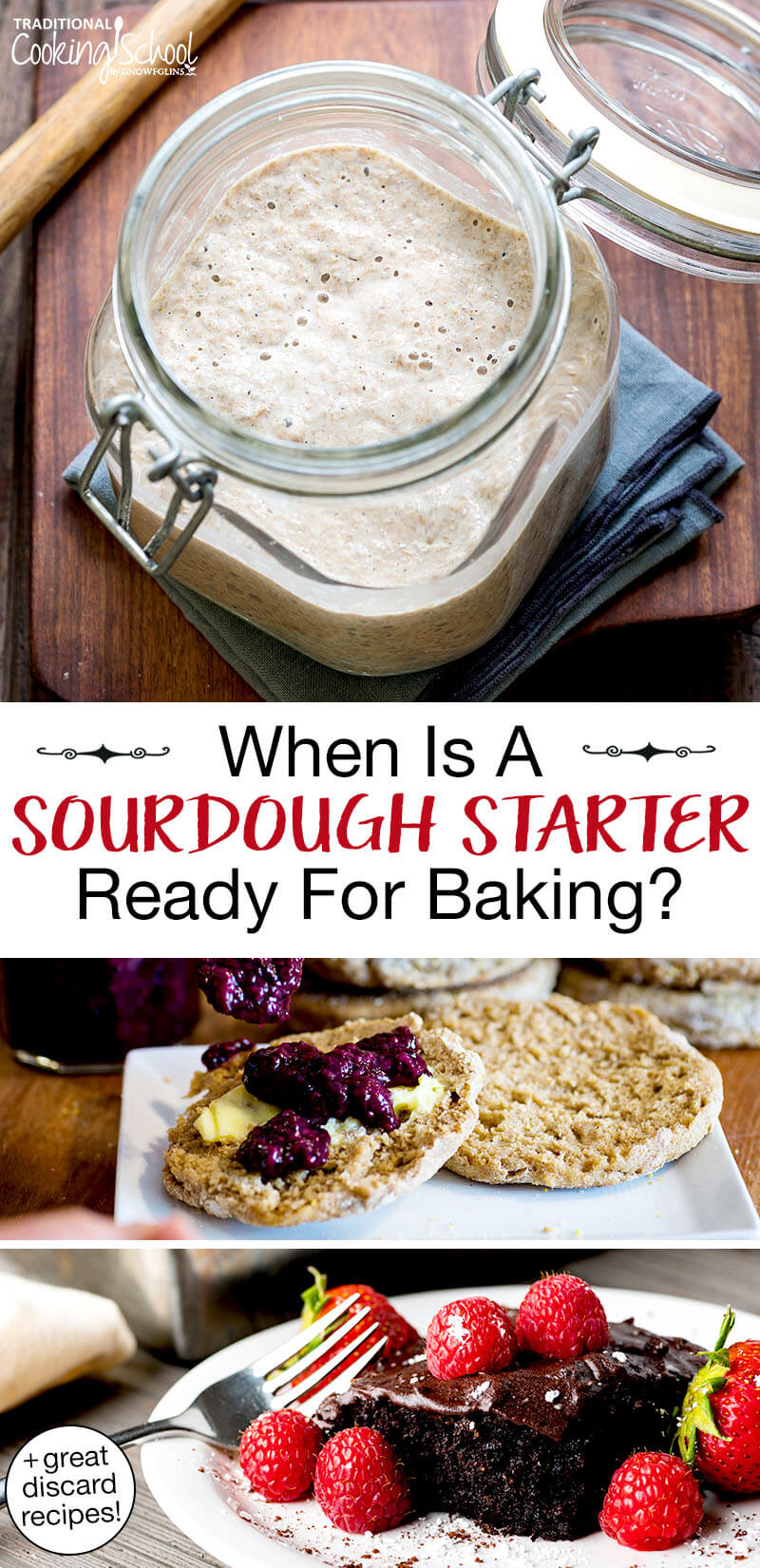
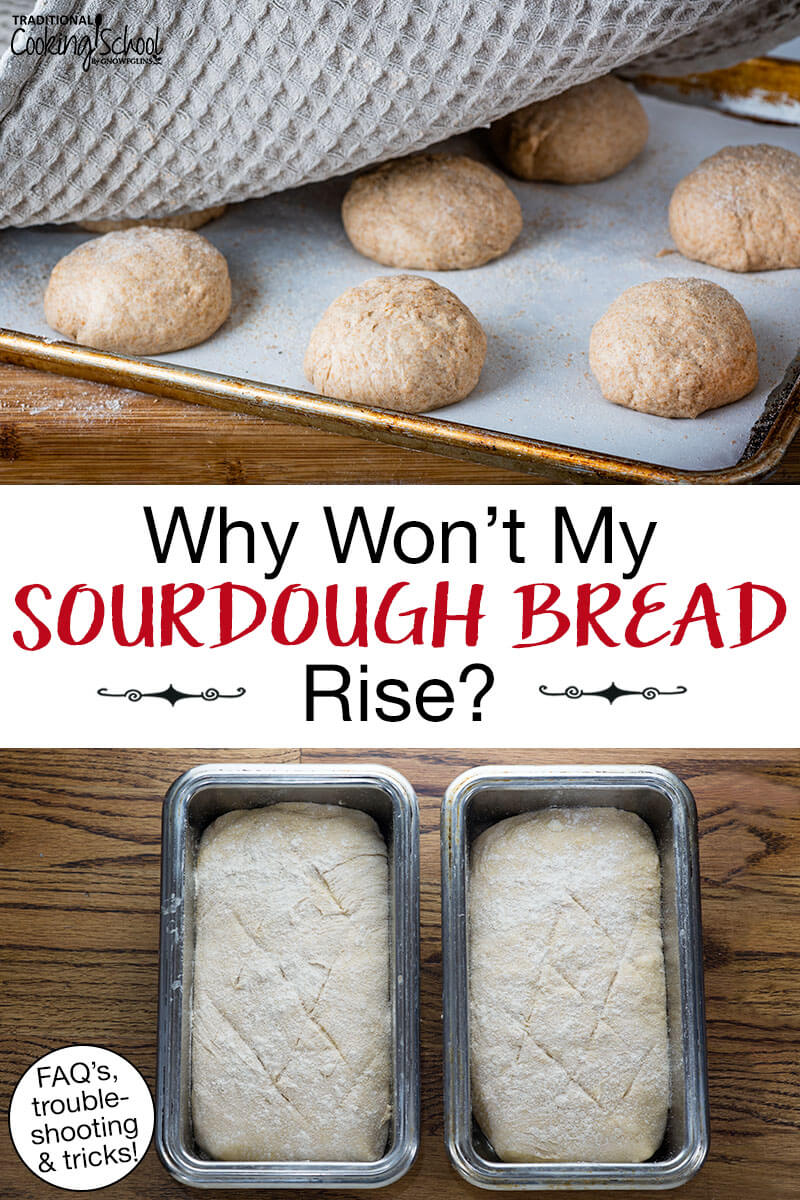
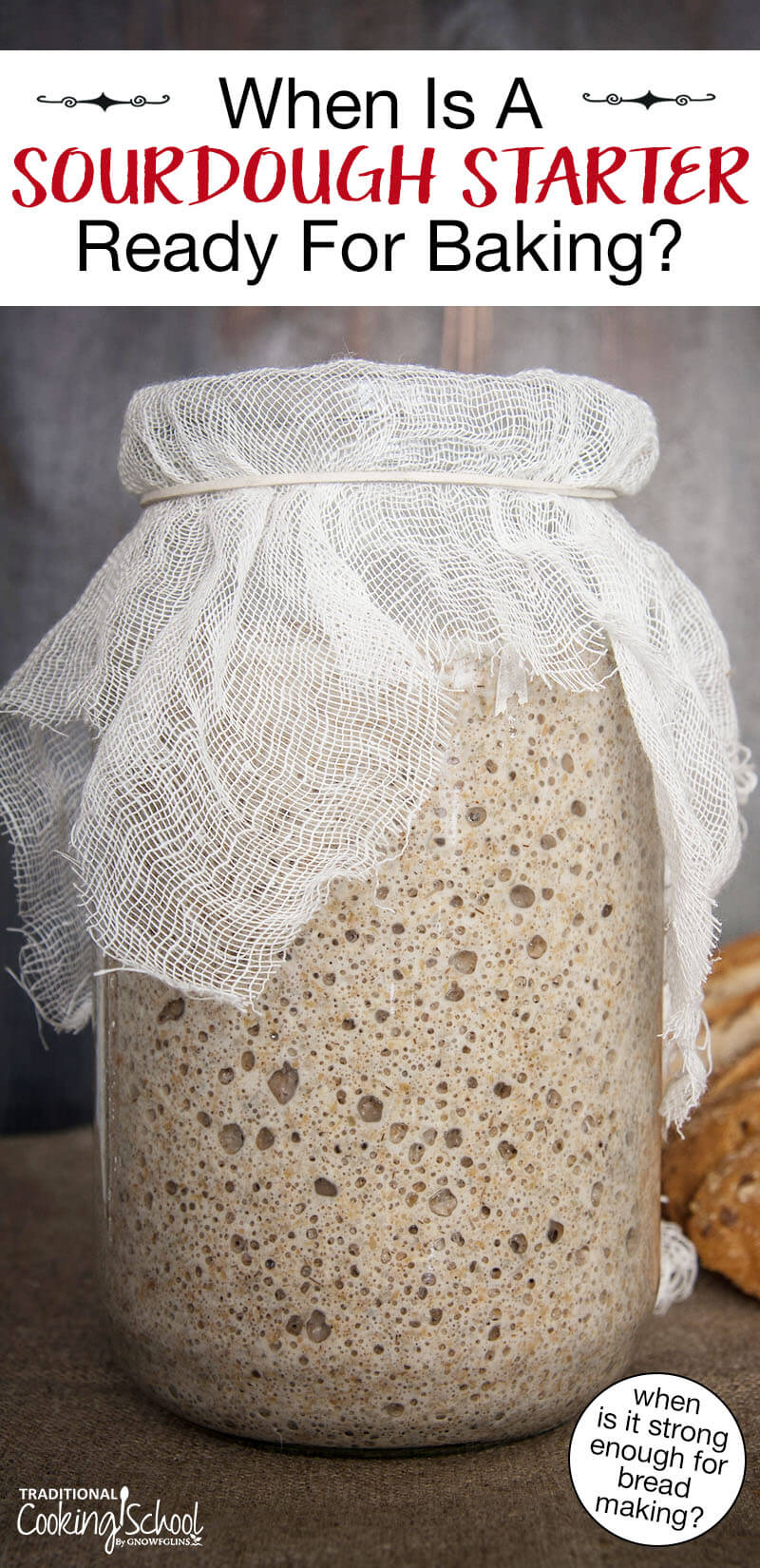
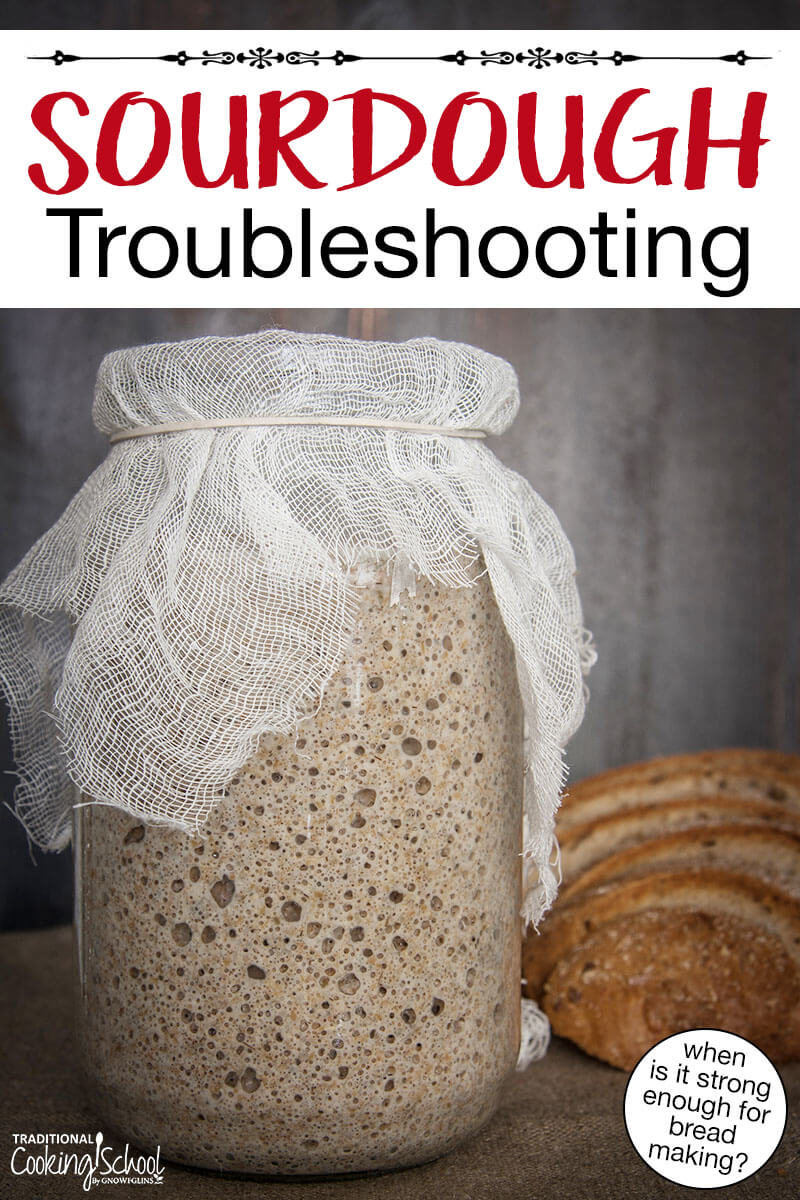
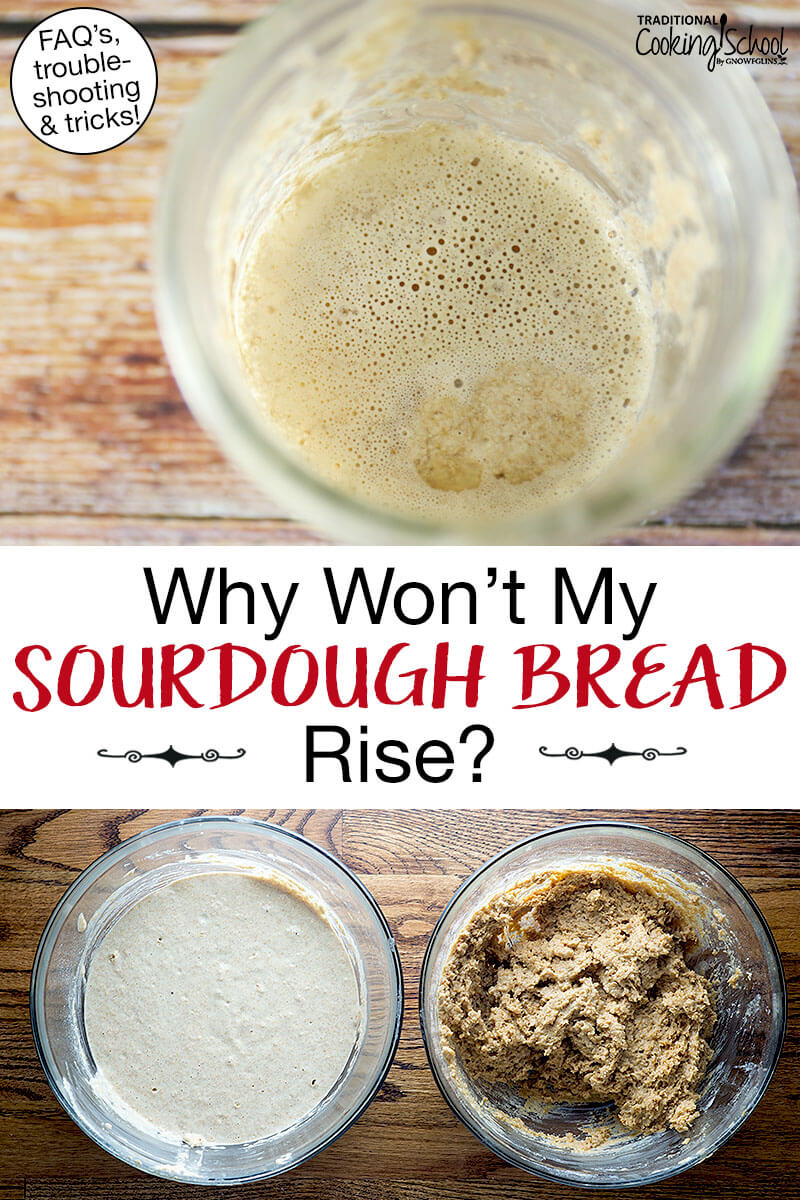
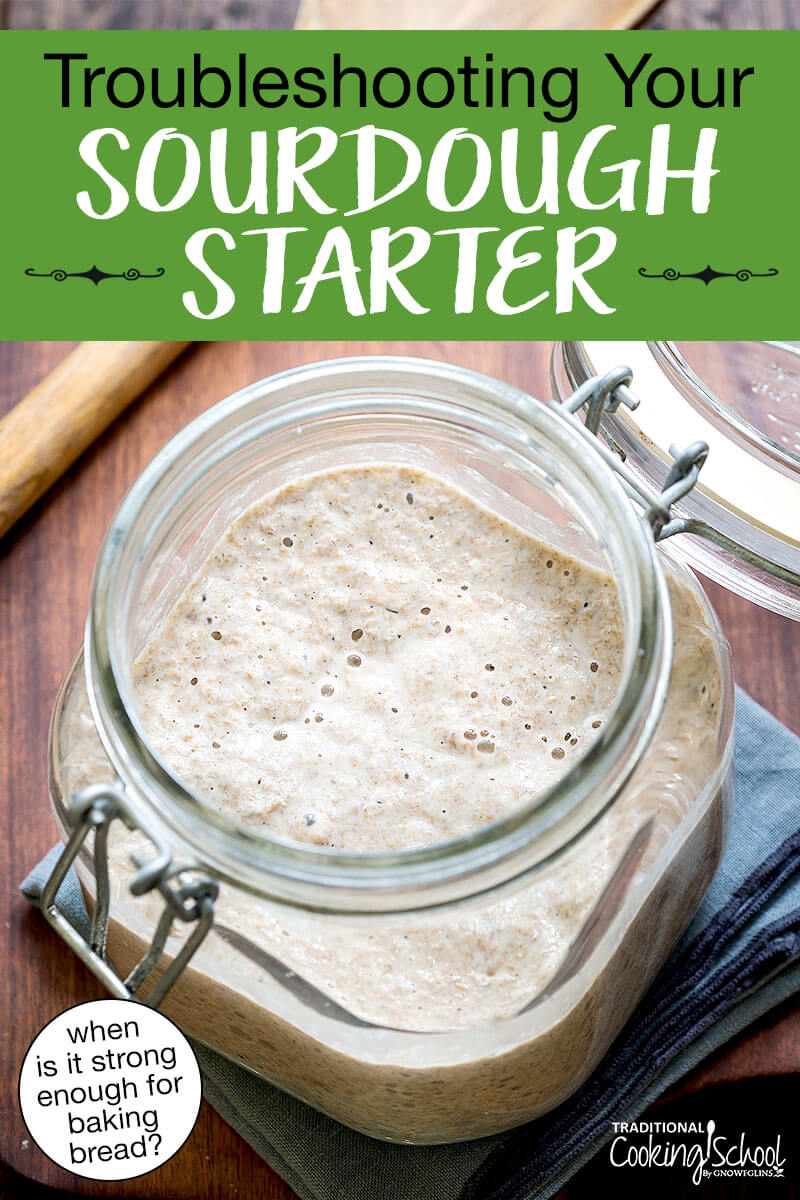
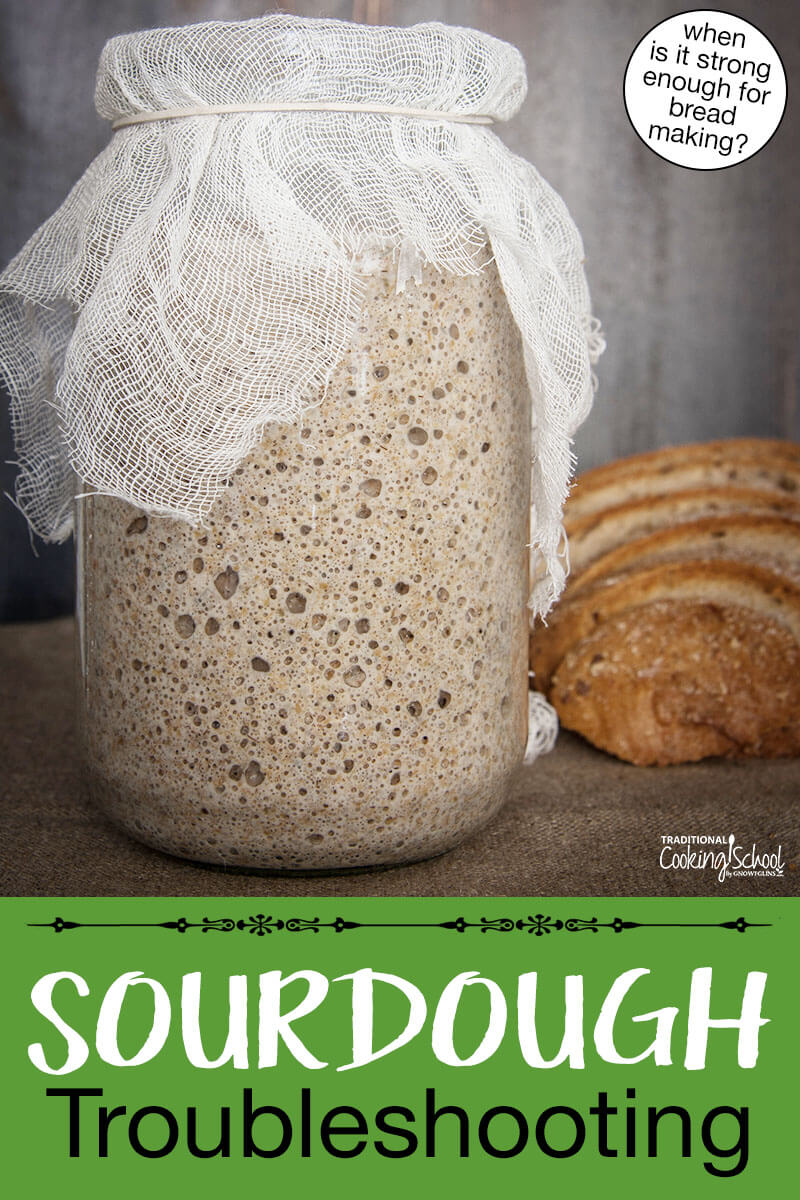
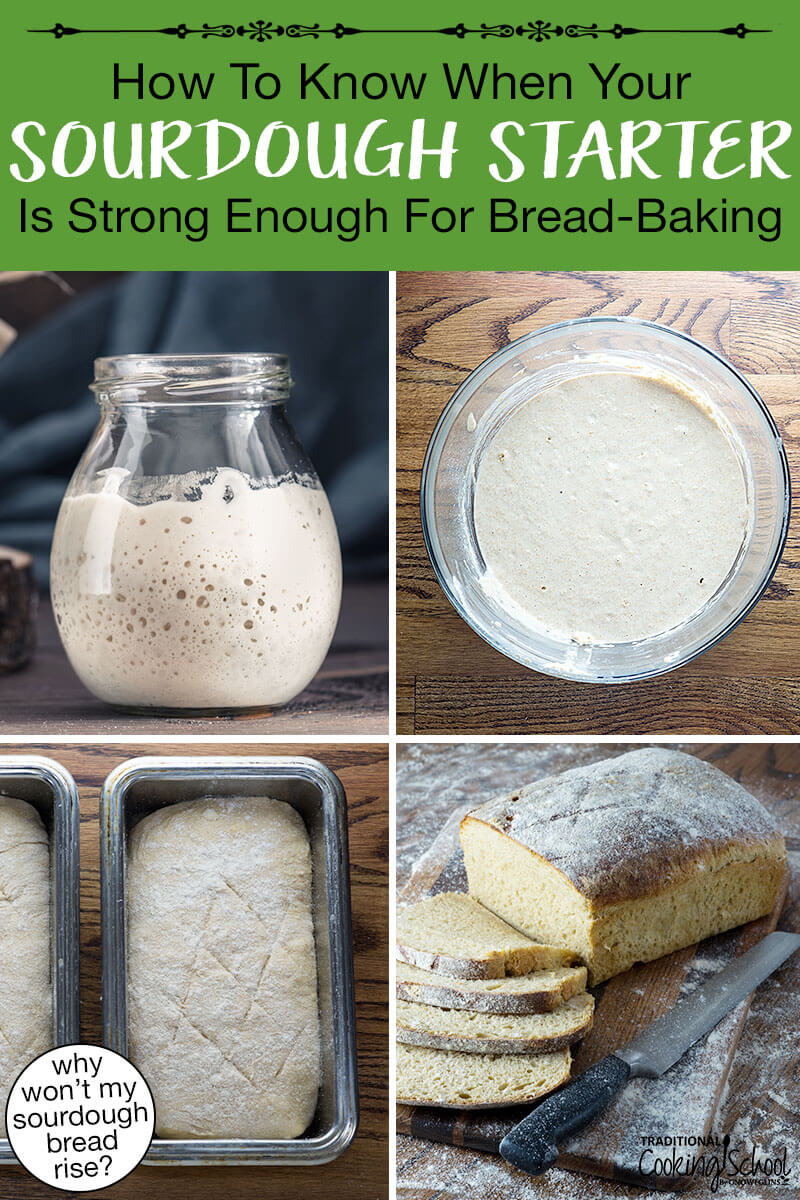
This is so helpful! I’ve been working with sourdough for years but have never gotten a good rise on bread that has a great crumb, too. I have never seen that a refrigerated dough needs 3+ days of feedings. I can’t wait to try this!
Does sourdough cut out part of the carbs?
Hi Melissa, Thanks for these tips. It inspires me to try again making bread. I wonder if it would work the same with gluten free flours. Does your book include GF alternative recipes?
Hello,
I’m new to sourdough. I bought a sourdough starter and at the same time I’ve started my own with water and rye flour. The bought one hasn’t shown any activity yet, but my own starter is full of bubbles and rise more than twice its initial size in only a few hours in the first day! I live in a very warm climate.
I’m very excited about experimenting with sourdough!
Just starting out in sourdough, wanting to get away from dependence on the grocery store for simple things like yeast etc.
I am using unbleached, non-enriched whole wheat flour, unfiltered tap water.
It took 2 days before I saw any action at all in my starter. Now, 6 days in, I have doubling in about 18 hours. Kitchen temperature hovers around 60°f, which explains the slow action.
What I am curious about is the smell and taste. I’m not getting a sour smell. My wife even agrees, it smells like Fleischmann’s active dry yeast (there are differences brand to brand). I’ve tasted a bit of the starter, and it tastes like a regular yeast bread dough. I didn’t use any commercial yeast in my starter.
Any clue as to why the lack of sour smell or taste?
I’ve heard that chlorine and flouride are BAD for a SD starter. I would suggest trying filtered water and see if that helps!
wait how much do I feed in these twice a day feedings??
I am also interested to know how much to feed the starter. It seems to me if you feed it twice a day and it takes 2 weeks to be ready you’ll have a mountain of starter. How does that work?
Cut the starter in half, use the same ratio of flour to water that you used to begin the starter.
The other half(discard) can be incorporated into a recipe reducing flour and water by the amount of discard you have. For instance, if you have half a cup of discard, reduce flour by 1/4 cup and water by 1/4 cup.
The other half can also be used as the base for another starter batch that is on the same schedule for feeding as your original batch.
Your second feeding should be small and does not require discarding any of your starter. Try 1/8th the size of your starter flour and water. For mine, I use 1 cup of flour and 1 cup of water thus I use 2 tablespoons of flour and 2 tablespoons of water for the evening feeding.
Hi, Heather,
You will find this post helpful in regards to discarding your starter at the beginning:
https://traditionalcookingschool.com/q-a/discard-half-my-starter-at-each-feeding-aw113/
~Peggy, TCS Customer Success Team
I started a sourdough starter from scratch about 7 days ago. 1/2 whole wheat and half white. It more than doubled in size on day 2 or 3 and now it just barely doubles by the time of the 2nd feeding 12 hrs later. I’ve read that it needs to AT LEAST double in size at the 4 hr mark after feeding. Is this accurate? or is my starter ready for use?
I read somewhere that if you take a piece of the starter and place it in water, it should “float”, an indication that it can be used in recipes. Another place mentioned that if it doubles within 8 hours, it’s good to go.
Just a few comments to help others. Don’t get discouraged! Don’t give up! Keep feeding and it will happen. I’m on day 14 and I think it’s almost ready. Which means I had many many days where nothing happened and I didn’t think it was working (I actually created a diary which helped keep track and helped me cope). I’ve been using whole wheat flour for most of the time (I tried unbleached all purpose in the beginning but it really didn’t do anything – got more action with the wheat) and it’s been in the oven with the light on the entire time. Sometimes, it just takes a while.
I’m on my 2nd day of feeding twice a day and I will start measuring after 4 hours to see if it doubled in size.
I do have a question – once it gets fully mature, can I go to all purpose? I’m scared to try since it didn’t work the first time. I don’t want to ruin my progress.
Thank you
I’m a newbie, but started my sourdough starter journey last week using King Arthur’s recipe. I started the first 2 days with whole wheat daily feeds and when I ran out of it, i used all purpose flour. Didn’t see much activity in the first 3 days and decided to place it in a warmer spot (oven with light turned on only) and by day 4, it was slowly showing some bubbles. By day 6, it was tripling by 8 hours. Kept the discard in a large plastic tub for making rolls. Waiting for the starter to mature a bit more before tackling bread.
when i feed it do I need to take some out?
A basic ratio for feeding is 1:1:1 for example 100g starter 100g flour 100g water so you’ll have to weigh your starter and trash the rest or find a use for them. Most likely you’ll end up throwing it away which is why sticking to small batches for household use is recommended. You can look into different ratios and combinations of flours later on, as that becomes the real separating factor between good and otherworldly sourdough. Also temping everything in the beginning worked wonders for me. Leaving mine In the oven with the light on got my temps to high when left for more than a couple hours, and I always made sure my water was around 80’f when feeding.
Melissa, thank you so much. The BEST guide I found online so far. I’m new to this, and panicking on day 3 already.
My starter is fed every morning, bumbling but it separated on day 2. It has a water separation in between. I fed it this morning with flour only, as I read that it has to have a consistency of a thick butter.
We live in Malaysia at the moment, so warmth is not an issue here))
Thank you again!!!
My starter is about 2 weeks old and consistently doubles after each feeding, but it takes a full 24 hours and the growth rate has not increased in the last 5+ days. I keep it in the oven with light on (~85F). I’ve been feeding daily. Looking for any tips.
Using Organic stone ground whole rye flour and spring water (85F).
Thanks!
Delightful post
Today when I feed my started it will be day 4 and the morning of day 4 before feeding it has slightly over doubled in size and bubbly is it to soon to bake with?
Hi, Nikki,
I know it is tempting to try to make bread with your starter only being 4 days old and it looks like it is ready. I would wait until it is 2 weeks old to try making bread for a greater chance of it succeeding. You can try it but I would use it for making waffles, crackers, or pizza crust for now.
~Peggy, TCS Customer Success Team
I started my sourdough journey 9 months ago and I didn’t really read what type of flour to use so I started it woth all purpose bleach flour and it did very well with that then changed it to unbleached and it still did good and now my stater more then triples it grows 4x it size all the time I have some to my boss who has worked with sourdough starter before and he thought I may have bought this one online because he has never seen one so active
I’ve added to much water to my first attempt at making a sour dough starter, it’s day 3 and hasn’t risen.Can it be saved or dumped?
Hi, Gerald.
If there are any signs of life (bubbles, sour by pleasant smell, doubling in size, or doming) I would not throw it out.
~Danielle, TCS Customer Success Team Lead
Hi,
I started my sour dough starter 10 days ago. I was using whole wheat bread flour, but ran out..so started using wheat cake flour. Is this a problem? I have had a good rise after the 5th day. I am only feeding 24 hours but my starter doubles in size after 5 hours again. I have loads of bubbles, when I turn my glass jar I get that stretch like look. I’m guessing my starter is nearly ready. I’m using 100g ratio of flour and water, discarding every day. Must I start feeding every 12 hours now? I fed this morning at 7am its 2pm and doubled in size again. I would like to try bake my bread by Saturday or should I wait until it’s two weeks. Just feed daily?
Hi, Linda,
Your starter is doing great, it sounds like it could use a feeding every 12 hours since it is active and bubbly after 5 hours. i would start with some discard recipes then try bread:
https://traditionalcookingschool.com/food-preparation/recipes/4-no-wait-sourdough-recipes/
~Peggy, TCS Customer Success Team
Do I always have to discard half of my starter every time I feed it?
Hi, Margaret.
I’m happy to help.
This Ask Wardee episode explains more: https://traditionalcookingschool.com/q-a/discard-half-my-starter-at-each-feeding-aw113/
After 48 hours my sourdough started gets all bubbly and rises real well but after I discard half and feed it it gets liquidy and won’t rise anymore. I’ve seen very small bubbles but they just seem to be less and less after each feeding. Please help. I’ve tried 5 different times. I’ve used rye and I use filtered water.
Hi, Susan,
There are a few factors that can be playing a role in why it is not showing signs of bubbles with your starter. Here are some resources for you on the blog: https://traditionalcookingschool.com/?s=sourdough+starter
Also, in case you didn’t know, we have a Bible-based cooking program where Wardee and our teachers and moderators answer questions about Traditional Cooking (such as sourdough and fermenting) via a private support group and weekly live Office Hours calls with Wardee.
We’re unable to do detailed troubleshooting outside of our program. Would you like more info about our program?
Here is a link for more info:
https://lp.traditionalcookingschool.com/lp/bible-based-cooking-program-direct/
I’m happy to answer questions about the program so you can get plugged in and get the help you need!
~Peggy, TCS Success Team